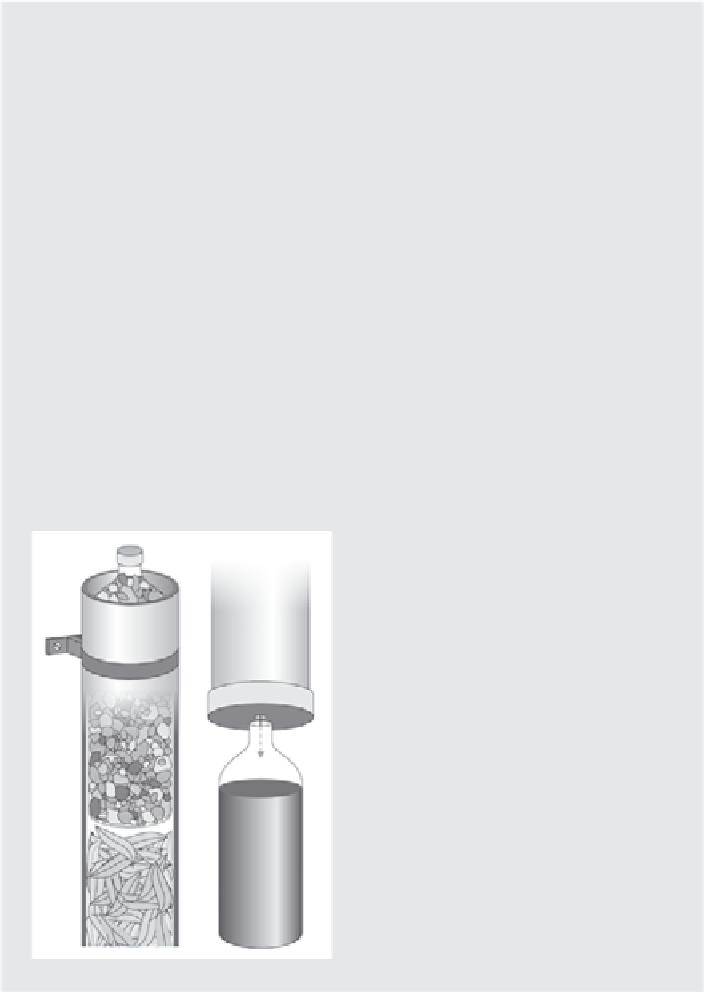Agriculture Reference
In-Depth Information
If you want to grow comfrey, make sure you buy a variety called 'Bocking 14'.
This was bred (by Lawrence Hills in the 1950s) to produce sterile seeds, so it
won't spread to cover your entire garden, and is propagated solely from root cut-
tings. It will therefore stay more or less where you plant it, although it will spread
out in a clump that gets a little bigger each year.
Tip
Comfrey tea
If you can spare a corner of the garden for some 'Bocking 14' comfrey plants, you can
make a powerful liquid fertiliser from the leaves. This is very smelly to do in a bucket
or barrel, but you can use a length of drainpipe to make a concentrated 'tea' with
no smell at all.
Using proprietary clips, fix a 2m length of drainpipe to the wall of a garage or shed,
position ing it just high enough to fit a drinks bottle underneath. Seal the bottom end
of the pipe with a plant saucer with a hole drilled through the middle of it and plenty
of silicone sealant. The top end also gets a plant saucer, but this is just fitted on loosely.
You will need to find a fizzy drinks (soda) bottle that fits down the pipe fairly snugly: fill
it with sand or gravel, and tie a 2m length of polypropylene twine around the neck to
pull it back out with later. Tie the other end of the twine around the top drain bracket.
Stuff the drainpipe with comfrey leaves, then put the sand-filled bottle on top to
weight it down. Put the top cap on to the drainpipe, and fit the drinks bottle under-
neath the hole in the bottom. In a couple of weeks the leaves will begin to rot, and
black comfrey extract drips down into the drinks bottle. When the bottle fills up,
put a lid on it and replace it with an empty one, and store the full bottle in a dark
place. Because less air gets at the liquid, less smell is produced than with the
traditional method, and although using
the extract can be a bit smelly, the
odour soon disperses. If you need lots
of the extract for the outdoor garden,
you can keep topping the drainpipe up
once or twice a week, but always use
what you make within a few months.
With no water added, this extract is a
very concentrated form of comfrey tea
and should be diluted to a tenth of its
strength with water before use on the
soil, or to a fortieth of its strength for
use as a foliar feed. This means that for
watering, a one-litre bottle of the
extract is just enough for a ten-litre
watering can. For use as a foliar feed,
you only need 25ml (approximately two
tablespoons) per litre, or 250ml per
ten-litre watering can.
































